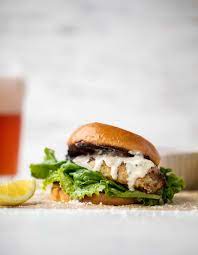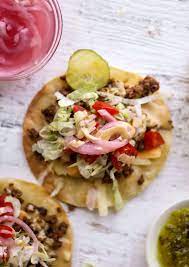Healthy Recipes for the New Year
You say you want to eat healthier for 2023? Okay, let’s find some recipes that will help you do just that without breaking the bank. I found the following recipes at howsweeteats.com and there are so many more for you to peruse. Just remember, if you are on a low sodium diet, PLEASE leave the salt out of the recipes.
Grilled Chicken Caesar Sandwiches – 4 people – if there are only 2 of you, just cut the ingredients in half.
Ingredients
· 4 boneless skinless chicken breasts
· 2 tablespoons olive oil
· 1 tablespoon Dijon mustard
· 2 garlic cloves, minced
· kosher salt and pepper
· 4 brioche buns
· freshly grated parmesan cheese, for topping
· romaine lettuce leaves, for topping
· lemon wedges, for spritzing
· Caesar dressing
Instructions
1. As a note, I like to use thin-sliced chicken breasts for this, because it’s what I prefer to bite into. You can use 4 large chicken breasts or 4 thin chicken breasts - use what you like! If you only have 2 large chicken breasts, you can also slice them lengthwise to make 4 pieces.
2. Place the chicken in a dish or resealable bag to marinate. Whisk together the olive oil, Dijon, garlic and a big pinch of salt and pepper. Pour the marinade over the chicken and refrigerate for at least 30 minutes or even overnight. Remove the chicken from the fridge about 30 minutes before grilling.
3. Preheat the grill to high and let it heat for 10 to 15 minutes.
4. Remove the chicken from the marinade, letting the excess drip back into the dish. Place the chicken on the grill and grill about 3 to 5 minutes per side (depending on thickness), until the internal temperature reaches 165 degrees F. Remove the chicken and let it rest for 5 to 10 minutes. I also like to grill the brioche buns too!
5. To assemble, I like to add some Caesar dressing on the bottom of the bun. Top with romaine, then top with the chicken. Spritz with lemon if you wish. Drizzle with Caesar dressing and sprinkle on parmesan cheese. Top with the bun and serve!
Cheeseburger Tostados – 4 people - if there are only 2 of you, just cut the ingredients in half.
Ingredients
· 8 (4-inch) corn tortillas
· 1 pound of lean ground beef – use ground turkey if you don’t want red meat
· 3 tablespoons ketchup
· 2 tablespoons yellow mustard
· 8 ounces sharp cheddar cheese, freshly grated
· chopped tomatoes, for topping
· shredded lettuce, for topping
· pickled onions, for topping
· pickles or relish, for topping
House sauce
· ½ cup mayonnaise
· 2 tablespoons Dijon mustard
· 1 tablespoon yellow mustard
· 1 tablespoon honey
· 1 tablespoon your favorite BBQ sauce
Whisk all ingredients together until smooth and combined. You can make this a day or so ahead of time!
Instructions
1. To make the tostadas, preheat the oven to 400 degrees F. As a note, you can also buy tostada shells!
2. Place the tortillas on a baking sheet (or 2, if needed). Brush or spray them with olive oil. Bake the tortillas for 5 to 10 minutes, then flip and bake for 5 minutes more. Let cool slightly before using.
3. While the tostadas are baking, heat a skillet over medium heat. Add the ground beef and cook until browned, breaking it apart into small crumbles. Stir in the ketchup and mustard until combined. Turn off the heat and add in a sprinkle of cheese - just an ounce or two.
4. Top each tostada with a sprinkle of cheese, then a spoonful of warm ground beef. Top with more shredded cheese. If you'd like, you can pop this back in the oven here for a minute or so to melt the cheese even more, but the beef does melt it. Drizzle with house sauce. Top with tomatoes, lettuce, and pickled onions! Add on pickles or any other condiments you love.
So, there are a couple with some meat, now let’s have a nice meatless recipe.
Honeycrisp Quinoa Salad with Kale and Pistachios – 4 people - if there are only 2 of you, just cut the ingredients in half.
Ingredients
· ½ cup cooked quinoa
· 1 large bunch lacinato kale, leaves removed from stems (you want 4 to 6 cups)
· 2 honey crisp apples cubed
· 6 ounces feta cheese cubed
· ⅓ cup dried tart cherries
· ¼ cup chopped roasted pistachios
Apple Cider Vinaigrette
· ⅓ cup apple cider
· 2 tablespoons freshly squeezed lemon juice
· 1 garlic clove, finely minced or pressed
· pinch of salt and pepper
· pinch of freshly ground nutmeg
· 1/2 cup extra virgin olive oil
Whisk together the apple cider, lemon juice, garlic, salt, pepper, and nutmeg. Whisk constantly while streaming in the olive oil. This dressing stays great sealed in the fridge for a few days.
Instructions
1. This is a great dish to use up leftover quinoa, but if you don’t have it made, start with that! Make a batch of quinoa first and while it cooks (it will take about 15 minutes), chop your other ingredients.
2. Chop the kale and place it in a bowl. Drizzle it with about 2 tablespoons of the apple cider vinaigrette and massage the kale with your hands for 1 to 2 minutes. Let it sit for at least 5 minutes.
3. If you are using just-cooked quinoa (so it's warm), you can put it over the kale to wilt it a bit. If it's cold or room temp, that is fine too. Once the kale has rested, add in the quinoa, apples, feta, pistachios and cherries. Toss well and drizzle on more of the dressing. Serve!
4. This salad stays surprisingly well overnight - the apples may slightly brown a bit, but if you seal it in a container, the leftovers are great.
If you’re anything like me and can’t eat cheese, there is a dairy-free cheese that is good. It’s made by Daiya and it tastes just as good as the real cheese.
The above recipes were taken from howsweeteats.com and there are so many more healthy recipes for you to try out for the new year. If you can’t find anything there, just Google eating healthy for 2023 or healthy recipes for 2023 and you’ll find hundreds of recipes.






